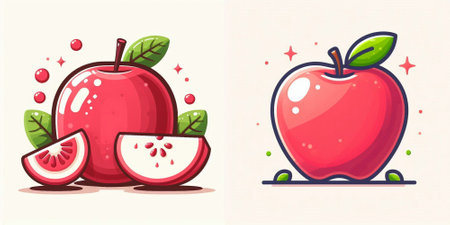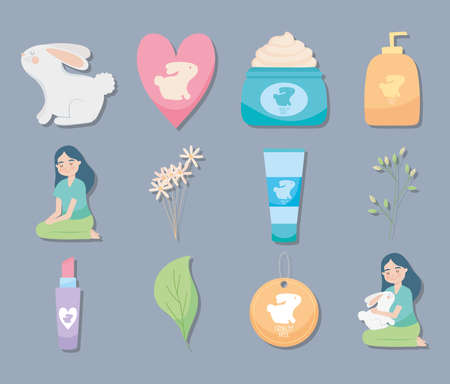1. Introduction: Why This Topic Matters in the US
Walk down any beauty aisle in America or scroll through your Instagram feed, and youll notice two words popping up everywhere: “cruelty-free” and “vegan.” These buzzwords are more than just marketing— they reflect a growing movement among American consumers who care about what goes into their makeup bags and how those products impact animals and the planet. In recent years, there’s been a noticeable shift as shoppers demand greater transparency from their favorite beauty brands. Whether it’s out of concern for animal welfare, personal health, or environmental reasons, more Americans want to know exactly what their makeup stands for. But with so many labels and claims on every product, it can get confusing fast! That’s why understanding the real difference between cruelty-free and vegan makeup is such a hot topic today, helping you make informed choices that match your values.
2. Defining Cruelty-Free: What Does It Really Mean?
When you’re shopping for makeup in the U.S., the term “cruelty-free” pops up everywhere—from drugstore shelves to trendy indie brands. But what does it actually mean? Let’s break it down and clear up some common confusion.
What Does Cruelty-Free Mean Under U.S. Standards?
Simply put, cruelty-free means that a product and its ingredients weren’t tested on animals at any stage of development. However, unlike some other countries, the U.S. doesn’t have a legal definition or regulation for the term “cruelty-free.” This means brands can use the label even if their standards vary. The FDA does not regulate this claim, so it’s important to do a little homework when you see it on packaging.
Animal Testing Laws in the U.S.
The U.S. has no federal ban on animal testing for cosmetics, though some states like California, Nevada, Illinois, and Virginia have passed laws prohibiting the sale of new animal-tested beauty products. Still, companies can sell animal-tested products in most states unless they specifically commit to cruelty-free practices.
Common Misconceptions
| Misconception | Reality |
|---|---|
| If it’s cruelty-free, it’s also vegan. | Nope! Cruelty-free only refers to animal testing; products can still contain animal-derived ingredients. |
| Cruelty-free is government-regulated. | Not in the U.S.—any brand can claim it unless you check for certifications. |
| If a brand is cruelty-free, all its products are too. | Not always! Some brands have cruelty-free lines but still sell other products tested on animals. |
How to Spot Authentic Cruelty-Free Products
Since anyone can slap “cruelty-free” on a label, look for third-party certifications like:
- Leaping Bunny: Requires companies to meet strict standards with independent audits.
- PETAs Beauty Without Bunnies: Companies must sign a statement promising no animal tests anywhere in their supply chain.
- Choose Cruelty Free (CCF): An Australian certification sometimes seen on U.S. imports.
You’ll usually find these logos printed right on the packaging—look for a leaping bunny or a heart-shaped bunny symbol as your go-to signs!

3. Understanding Vegan Makeup: More Than Just Ingredients
When you see a product labeled as “vegan,” it’s natural to think it’s the most ethical choice out there. But what exactly does vegan makeup mean, and is it always cruelty-free? Let’s break it down so you know what you’re really putting on your skin.
What Qualifies as Vegan Makeup?
Vegan makeup is all about the ingredients list. For a beauty product to be considered vegan, it cannot contain any animal-derived ingredients or byproducts. This means saying no to common additives like beeswax, carmine (a red pigment made from crushed insects), lanolin (from sheep’s wool), collagen, and even certain types of glycerin or squalane that come from animal sources. Instead, vegan brands use plant-based or synthetic alternatives to achieve similar effects—so you can still get that creamy lipstick or glossy highlighter without any animal involvement.
Animal-Derived Ingredients to Watch Out For
If you’re shopping for vegan makeup in the U.S., here are some top ingredients to keep an eye out for on ingredient labels:
- Beeswax (Cera Alba): Used in mascaras, lip balms, and creams.
- Carmine (CI 75470): Gives reds and pinks their vibrant color in blushes and lipsticks.
- Lecithin: Sometimes sourced from eggs, though soy-based lecithin is also common.
- Collagen & Keratin: Sourced from animals, often found in anti-aging and hair products.
- Lactose & Casein: Milk derivatives used for texture or moisture.
Pro Tip:
U.S. ingredient lists don’t always make it obvious when something is animal-derived. If you’re unsure, look for certified vegan logos or check with the brand directly.
Why ‘Vegan’ Doesn’t Always Mean Cruelty-Free
This is where things get a bit tricky! A product can be 100% vegan—meaning zero animal ingredients—but still not be cruelty-free if it was tested on animals at any point during development. In the U.S., some brands sell vegan formulas but may test on animals due to regulatory requirements in other countries or outdated company policies. So if animal welfare is important to you, make sure your makeup is both vegan and cruelty-free. Look for third-party certifications like Leaping Bunny or PETA’s cruelty-free logo to shop with confidence.
4. Cruelty-Free vs. Vegan: Key Differences You Should Know
If you’re new to the world of ethical beauty, it’s easy to mix up “cruelty-free” and “vegan” makeup. But while both labels aim to make your cosmetics routine kinder, they’re not the same—and sometimes, a product can be one but not the other! Let’s break down what sets them apart and where they overlap.
Direct Comparison: Cruelty-Free vs. Vegan Makeup
| Cruelty-Free | Vegan | |
|---|---|---|
| Animal Testing? | No animal testing at any stage | May or may not be tested on animals* |
| Animal-Derived Ingredients? | Can contain animal ingredients (like beeswax, carmine, lanolin) | No animal-derived ingredients at all |
| Main Focus | Protects animals from harm in testing processes | Eliminates animal products for ethical or dietary reasons |
*Note:
A product can technically be labeled vegan if it contains no animal ingredients—even if it was tested on animals (though most brands try to be both).
Overlap & Differences in Real Life
Some brands check both boxes, but here’s how things look in practice:
- Cruelty-Free but Not Vegan: Many cult-favorite mascaras are certified cruelty-free but use beeswax for texture—so they aren’t vegan.
- Vegan but Not Cruelty-Free: Some international brands offer formulas with zero animal-derived ingredients, but sell in countries where animal testing is required by law. So, the formula is vegan, but the brand isn’t cruelty-free.
Real-World Product Examples
- Burt’s Bees Lip Balm: Cruelty-free, not vegan (contains beeswax).
- COVERGIRL Clean Fresh Skin Milk Foundation: Both cruelty-free and vegan!
- NARS Radiant Creamy Concealer: Not cruelty-free (tests where required), some shades are vegan-formulated.
The bottom line? Always check both labels if you care about both issues—because “cruelty-free” and “vegan” are not interchangeable!
5. How to Decode Labels and Certifications
If you’ve ever stood in the beauty aisle feeling totally lost about what “cruelty-free” or “vegan” actually means on a makeup label, you’re not alone. The U.S. market is flooded with symbols, logos, and claims—some are legit, and others are just clever marketing. Let’s break down the most trusted certifications and teach you how to spot the real deal from the fakes.
Trusted Cruelty-Free Certifications
Leaping Bunny
This is one of the gold standards in cruelty-free certification in the U.S. If you see the Leaping Bunny logo (a cute bunny leaping over a star), it means that brand has committed to zero animal testing at all stages of product development—even their ingredient suppliers must comply. It’s independently audited, so you can trust it’s not just a marketing ploy.
PETA’s Beauty Without Bunnies
The PETA bunny logo is another common sight. Brands that display this symbol have pledged not to test on animals, but keep in mind: PETA relies on self-reporting by companies, so there’s less oversight compared to Leaping Bunny. Still, it’s a solid indicator for cruelty-free shoppers.
Choose Cruelty Free (CCF)
While CCF is an Australian organization, some U.S. brands boast this logo too. Like Leaping Bunny, they have strict standards for animal testing throughout production.
What About Vegan Certifications?
For vegan makeup, look for specific vegan logos like “Certified Vegan” by Vegan Action or Vegan Society’s sunflower symbol. These guarantee the product contains no animal-derived ingredients or byproducts—but remember, vegan doesn’t always mean cruelty-free!
How to Spot Marketing Traps
Many brands use misleading phrases like “not tested on animals” or slap on their own bunny logo without any third-party verification. Watch out for:
- No official logo: Real certifications come with recognized symbols.
- Vague language: Claims like “cruelty-conscious” or “animal friendly” aren’t regulated.
- Small print: Some brands don’t test finished products but might still use ingredients tested on animals elsewhere.
Pro Tip:
If you’re ever unsure, check the brand’s status directly through Leaping Bunny or PETA’s online databases. That way, you can feel confident your makeup matches your values!
6. Why It Matters: Your Impact as a Beauty Consumer
Ever feel like your single lipstick purchase doesn’t really make a difference? Think again! As a beauty consumer in the US, every product you choose sends a message to brands about what you value—whether thats animal welfare, ingredient transparency, or eco-friendly packaging. When you opt for cruelty-free makeup, youre telling companies that animal testing is not okay in your book. If you go for vegan products, youre also supporting the move away from animal-derived ingredients, which can reduce demand for animal agriculture and its environmental impact.
Your Choices Shape Beauty Trends
American shoppers have major influence over what’s trending on store shelves. The more we reach for cruelty-free and vegan options at places like Target, Ulta, or even drugstores, the faster big brands take notice and adjust their formulas. That’s how “clean beauty” became mainstream—it started with everyday people asking for better products. So yes, your choices add up!
Supporting Animal Welfare
Cruelty-free makeup means fewer animals are harmed for our daily routines. Even though animal testing is banned in many countries, it’s still not required everywhere in the US. By choosing cruelty-free, you’re pushing for higher standards across the industry and encouraging more brands to get certified by groups like Leaping Bunny or PETA.
Eco-Friendly Practices
Vegan beauty often goes hand-in-hand with planet-friendly decisions: less reliance on factory farming, reduced carbon footprint, and sometimes even recyclable or compostable packaging. When you shop mindfully, you’re voting for a cleaner future—one mascara tube at a time.
Tips for Mindful Shopping
- Read labels carefully: Look for official cruelty-free or vegan certifications.
- Check brand websites for up-to-date policies—they change more often than you’d think!
- Support local or indie brands that value transparency and sustainability.
- If possible, buy only what you need—reducing waste is just as important.
Bottom line: Your beauty routine can reflect your values. With so many affordable and accessible options in the US today, choosing cruelty-free or vegan makeup isn’t just trendy—it’s powerful. Happy shopping!


